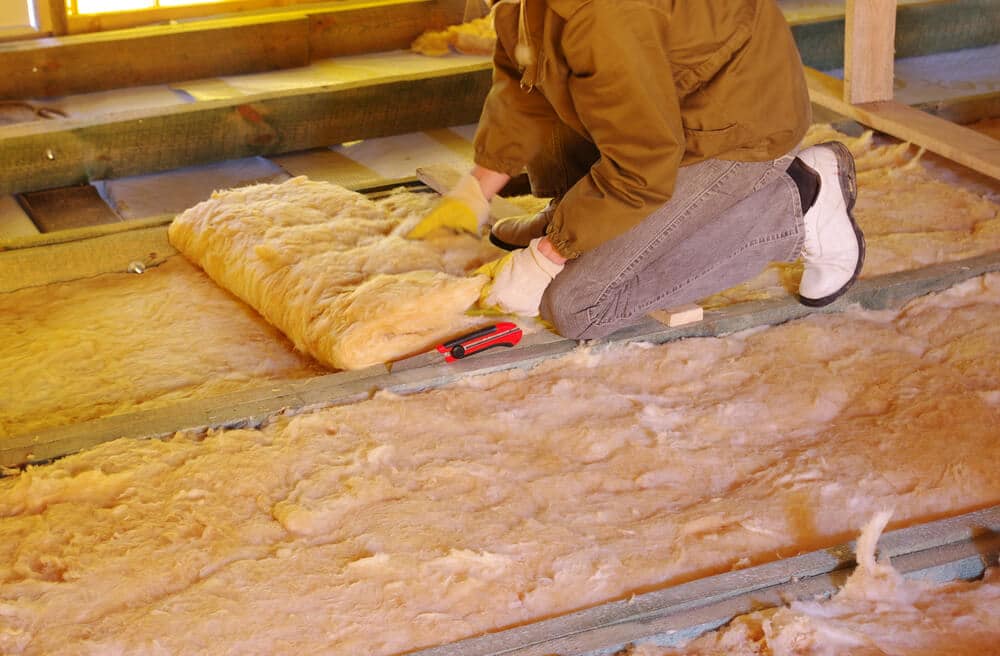Is your home colder than usual in the winter or warmer than normal in summer? It may be time to remove the insulation in your attic. It’s also known that old insulation can be a health risk and should be monitored closely.
Many homes feature attic insulation for better temperature management. The insulation material can be asbestos, blown-in insulation, or fiberglass batt, depending on the age of your home. In this article, you’ll learn how to efficiently remove insulation from your attic.
Attic Insulation Removal Basics
Adequate insulation ensures your attic always remains at an optimal temperature. However, a poorly insulated attic can significantly reduce your home’s energy efficiency. Therefore, acting fast is essential if you have old and decayed insulation.
The removal process will vary depending on the type of insulation material and your experience level. However, it’s a demanding DIY project that will require adherence to strict safety measures.

The Attic Insulation Removal Process
The first thing you need to do when looking for how to remove old attic insulation from your attic space is to gather the equipment you need. Some of them include:
- A commercial-grade insulation removal vacuum
- Ten-inch vacuum hose (up to 150 feet long)
- A ladder six to feet in height
- Wall and floor coverings
- Protective gear for your nose, eyes, skin, fingers, and legs
- Tape
- A dumpster
Once you have the equipment you need for the job, prepare your home for the impending mess. Cover up the wall and floor and ensure a clear path from your attic access to the door. Wear your protective gear to start the process.
The Process for Blown-in Insulation Removal
Follow these steps for blown-in insulation removal:
- Set up the insulation removal vacuum and run the hose to the attic.
- Climb into the attic to resume the removal process.
- Suck out the insulation from the walls and use a rake and dustpan to clear any remnant debris.
- Dispose of the collected insulation material in the dumpster.
The Process for Fiberglass Batt and Foam Insulation Removal
- Climb into the attic with some vacuum bags.
- Remove the fiberglass batt insulation or foam boards by hand.
- Roll them up and place them into the vacuum bags.
- Continue the process, filling up as many bags as necessary with the discarded fiberglass batt insulation.
The Process for Vermiculite Insulation Removal
The process for vermiculite insulation removal is the same as for asbestos insulation removal. Vermiculite insulation contains asbestos—a known carcinogen. If you live in a home built before 1970, you may have asbestos or vermiculite insulation in your home.
In this case, you should never attempt the removal process alone. Here’s how to remove insulation from your attic space if you have asbestos.
- Send a notification to the San Diego Air Pollution Control District.
- Contact accredited asbestos inspectors and contractors for testing and removal.
- Use one company for testing and another for removal to avoid conflict of interest.
- Move your family out of the home before the removal process begins.
Spray Foam Insulation Removal
You can complete spray foam insulation removal manually or using a special machine. We’ll cover both methods below.
Before starting the process, wear your mask and protect your eyes. The chemicals in spray foam can cause lung damage if you inhale the particles for long periods.
Manual Removal
- Cut out the spray foam insulation with a saw or knife.
- Use a paint scraper or hard-bristled brush to reach spray foam in recessed areas and cavities.
- Dispose of the spray foam cut out carefully.
Machine Removal
You can use a spray foam removal machine to remove the insulation in your attic. You’ll need to hire one of these heavy-duty machines as they are not your standard garage equipment.
- Connect the vacuum hose to the spray foam removal machine.
- Attach the vacuum bag to the machine to catch the insulation material you remove.
- Climb into the attic and begin the removal.
- Use the manual approach to cut out stubborn spray foam.
Health Risks and Safety Precautions for Insulation Removal
Different insulation materials pose various health risks, so it’s imperative to take appropriate safety precautions when removing them from your attic.
Asbestos and Vermiculite Insulation:
Asbestos and vermiculite insulation are known carcinogens and can cause severe respiratory issues if inhaled. Never attempt to remove these materials yourself. Always hire licensed professionals with the proper equipment and training to handle them safely.
Fiberglass Insulation:
Fiberglass insulation can cause skin, eye, and respiratory irritation. When removing fiberglass insulation, wear a long-sleeved shirt, pants, gloves, goggles, and a dust mask or respirator to minimize exposure to the fibers. Avoid touching your face or uncovered skin while working with fiberglass insulation.
Cellulose Insulation:
Cellulose insulation is made from recycled paper products and is often treated with boric acid as a fire retardant. While generally safe, inhaling cellulose dust can cause respiratory irritation. When removing cellulose insulation, wear a dust mask or respirator, goggles, and gloves to minimize exposure.
Spray Foam Insulation:
Spray foam insulation can release harmful chemicals during removal, which may cause respiratory issues and skin irritation. Always wear a respirator with an organic vapor cartridge, protective gloves, and goggles when removing spray foam insulation. Work in a well-ventilated area and take breaks to minimize exposure to fumes.
Environmental Considerations
When removing old attic insulation, it’s essential to consider the environmental impact of the process and the proper disposal of the materials.
Recycling and Disposal:
Check with your local municipal waste management authority to determine the proper disposal method for your old insulation. Some insulation materials, such as fiberglass and cellulose, may be recyclable. Others, like asbestos and vermiculite, require special handling and disposal at designated hazardous waste facilities.
Properly disposing of old insulation and replacing it with new, eco-friendly materials is essential in creating a more sustainable and energy-efficient home. Considering these environmental considerations during your attic insulation removal project, you can contribute to a greener future while improving your home’s comfort and safety.
Related Article: The Need for Attic Inspection & its Advantages
How Long Does It Take To Remove Attic Insulation?
Attic insulation removal can take from four to 20 hours to complete for a standard 1,500-square-foot attic. The exact duration will come down to factors such as your experience level, the number of helping hands on the job with you, the type of insulation, the working speed, and more.
How Much Does Attic Insulation Removal Cost?
Having attic insulation removed can cost around $1,000 to $3,000 for a 1,500-square-foot space. You should expect to spend closer to the lower end of the estimate if you go the DIY route. The total attic insulation removal cost will come down to factors like the size of the space and the condition of the old insulation.
Keep in mind that the estimate only covers the removal of the old attic. Installing a replacement is a different project.
FAQs on Attic Insulation Removal
Can I Remove the Insulation Myself?
You can remove attic insulation yourself. However, it’s a complicated and risky job. You need to prepare for the removal process well in advance.
Blown insulation removal and foam insulation removal are the easiest for DIY enthusiasts.
However, if you have vermiculite or asbestos attic insulation, you can’t remove it on your own. You need professional help for both the testing and removal.
What Is the Best Way to Get Rid of Insulation?
The best way to get rid of fiberglass insulation is to bag it properly and contact your local waste authority for safe disposal. Most insulation materials are hazardous, so you can’t leave them with other household waste.
Is It a Good Idea to Remove Old Insulation?
Removing old insulation is worth it. It’s the best way to remove weak insulation and make room for a more energy-efficient installation. Removing old insulation can also improve the indoor air quality in your home.
Conclusion: Hire Professional Help for Your Attic Insulation
Knowing how to remove insulation from your attic is one thing; completing the project yourself is another. Insulation removal isn’t the project if you’re new to DIY jobs. A few dangers are associated with the process, including handling pest waste and harmful insulation materials. For this reason, many homeowners elect to use the services of a professional insulation contractor.
Call Attic Projects at 858-923-4083 if you need professional help with attic insulation removal in Orange County, San Diego, Seattle, or Everett
Related Article: How to Install Pull Down Attic Stairs




